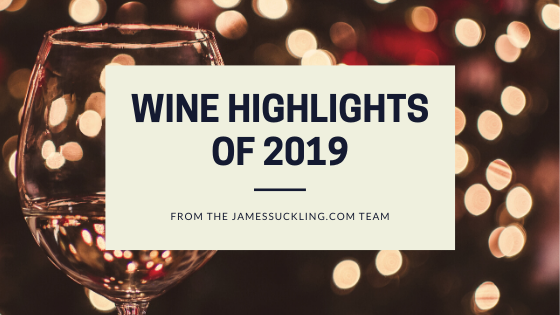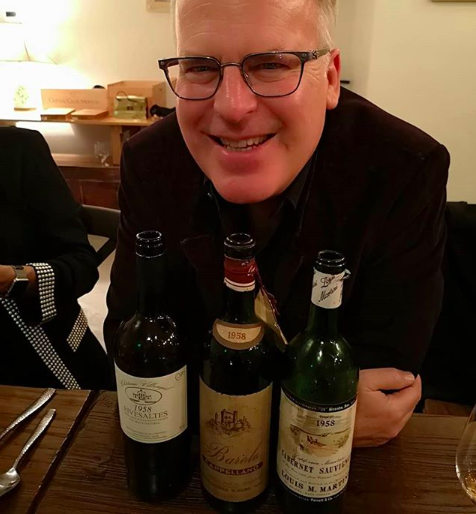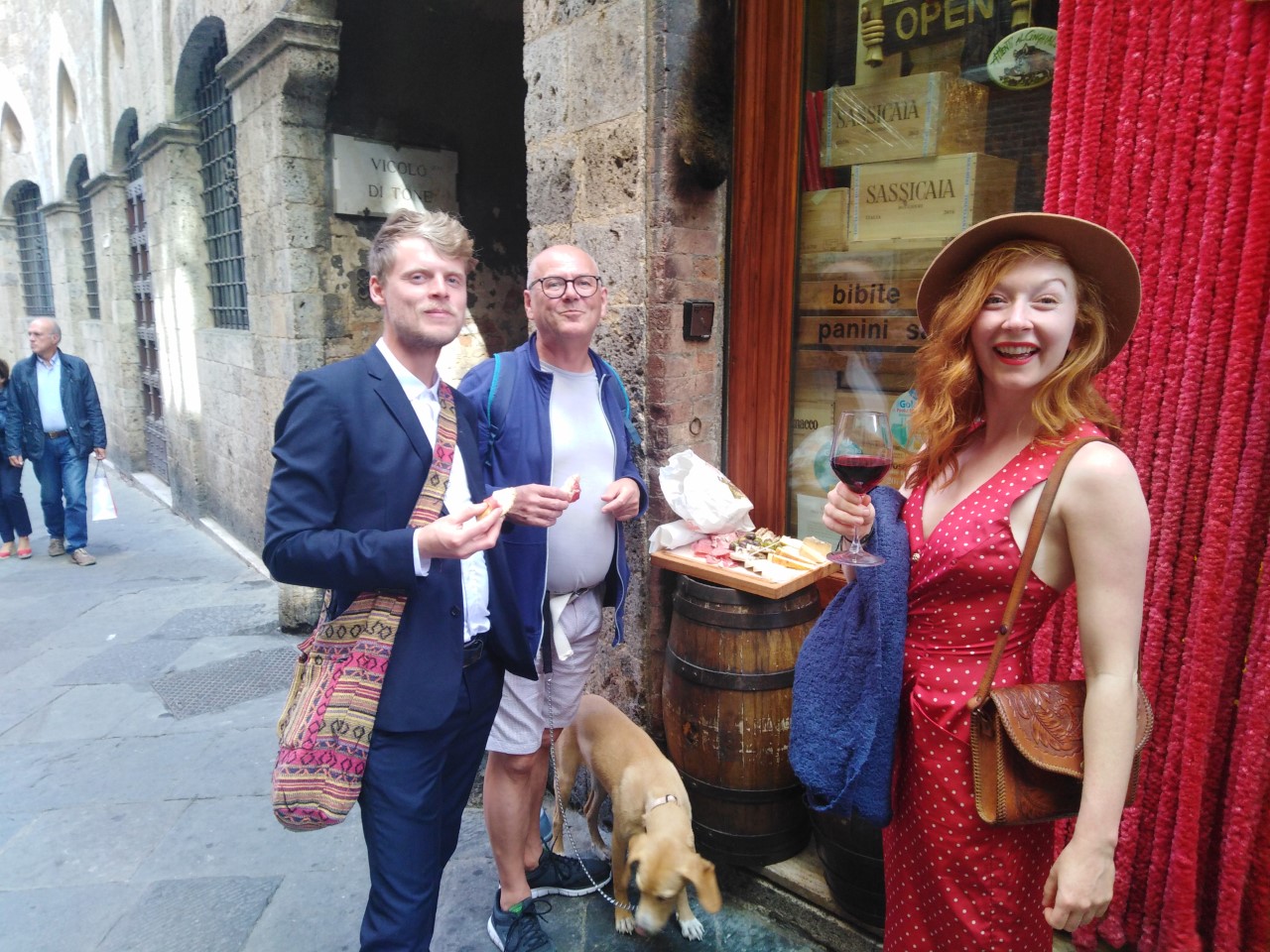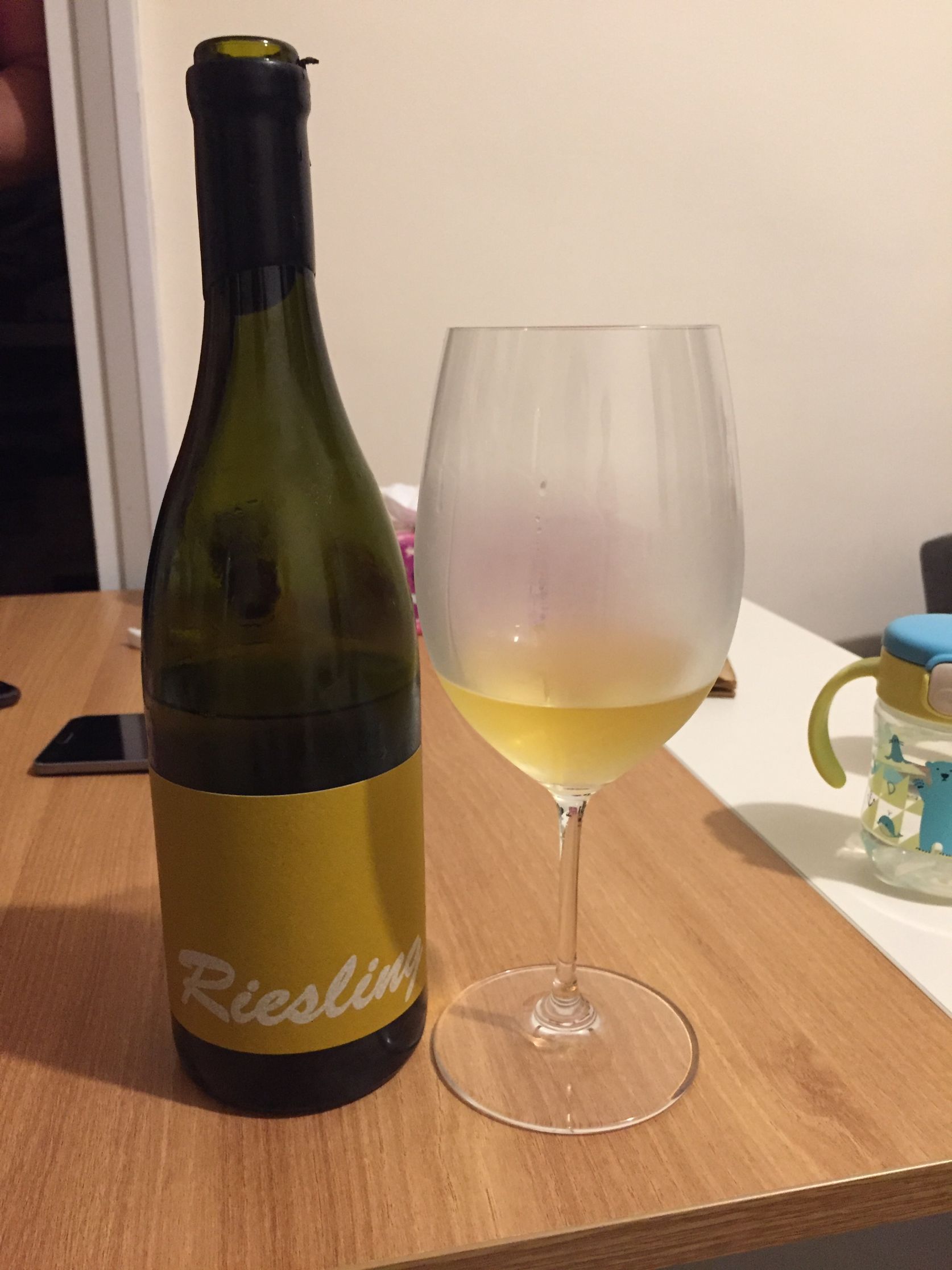9 Top wine highlights of 2019

As 2020 begins it’s natural to focus on resolutions – the things we’ll do more of, less of, or better next year. But we thought it’s also worth looking back, to recall the moments in wine that last long after the final drop has been drunk.
Add your own 2019 highlight in the comments.
—
Time traveling with Louis M. Martini
James Suckling, CEO and editor
One of the great wine moments last year that sticks out in my mind is drinking a bottle of 1958 Louis M. Martini Mountain Cabernet Sauvignon in Ungrafted wine bar in San Francisco. It was my birthday party just before our Great Wines of the Andes event, I was with some team members of JamesSuckling.com as well as friends and family, and the wine – which was from my birth year – was stupendous.
It was one of those time machine moments, the old bottle of red bringing back fond memories from my time as a young reporter for The Wine Spectator in the early 1980s when I often had the chance to meet Louis P. Martini, the son of Louis M. Martini, at his old winery near St. Helena. He was a tall and softly spoken man but he left an impression and I remember tasting many old bottles of Martini cabernets and barberas with him.
The 1958 was literally tasting Napa history. At first, it seemed austere and dry on the palate but as the wine opened in the glass it showed fabulous aromas of black currants, citrus and minerals. It was medium-bodied with fine tannins, a wonderful freshness at the back of the palate and it evolved beautifully in the glass. It was about 12 percent alcohol – and perfectly intact – and highlighted that high alcohol wines were not the norm in California until recently, and also that the high octane character of some California wines is not necessary for them to age well.
—
Cheese, truffles and a bottle of Dom
Meaghan Qian-Fu Becker, publisher
One of my best memories from 2019 is enjoying a bottle of 2008 Dom Perignon with my husband at Torc, our favorite restaurant in Napa. 2008 was a fantastic vintage in Champagne and the Dom Perignon in particular has a beautiful balance of power and freshness. This is one of my favorite vintages in recent history.
To provide a worthy partner for the champagne, the chef created an American classic with a twist – a double decker grilled cheese sandwich with a layer of black truffle and a layer of white truffle, made possible by a timely overlap in these two truffle seasons.
As they say, sometimes it is better to be lucky than good!
—
Rhone dream realised
Nick Stock, executive editor
Visiting Chateau Rayas had been a dream of mine ever since I tasted their Chateauneuf-du-pape ‘Reserve’ for the first time. It was the 1985 and I was mesmerised by its complexity and the way it grew and changed in the glass. That great bottle of 1985 was like a ghost I carried with me during subsequent tastings in the region. Add to it the ghosts of the many other great bottles of Rayas tasted since (especially the 1989!) and I had become completely fascinated with seeing the site firsthand.
And so when the opportunity to visit was confirmed during my annual visit to the Rhone in July 2019 I was wildly excited and also quietly terrified. The night before the visit was like being a child on Christmas Eve again. Had I built the anticipation to such heights that going there would be disappointing? Or would it actually be a profound experience? I barely slept.
The following day was a hot one and after locating the place (it is notoriously tricky to find) I was greeted by the enigmatic Emmanuel Reynaud. He proposed that we walk the vines so that he could explain the site to me. The scorching 38ºC heat of the day quickly bent conversation towards the character of the Rayas site that gives the wines their fresh character.
Reynaud detailed the importance of the red clay and sand soils at Rayas and their ability to hold moisture. He explained how the imposing pine trees that surround the vines moderate heat and help vines retain freshness. We discussed the naturally low yields and the way in which grenache delivers density with levity at Rayas. Reynaud’s final remark as we headed into the cool respite of the old cellar to taste was poignant. “To produce wines like this 90 percent of the quality comes from the grape,” he said. “It is not the winemaking.”
Everything he had said and everything I had seen was reflected so succinctly in the wines we tasted. Needless to say, this visit did not disappoint!
—
German awakening
Alessandro Lapomarda, tastings
I have never been a big fan of German wines. In the past I have had trouble dealing with them, not least during my sommelier exams (they cost me a pass last time!). But after the JamesSuckling.com tasting trip in Germany in September I totally changed my mind.
It was September 17, 2019, and Jack and I were at the Egon Müller winery. After the usual tasting routine, we went on an unexpected tour in the old, humid, dusty cellar, dodging spider webs. After the tour we drank an incredible bottle of Wiltinger Braune Kupp Riesling Spatlese 1988. The first words out of my mouth were “Mamma Mia!” (Yes I’m Italian!)
Nearly 30 years old and the wine was so fresh and gentle, and at the same time so aromatic: green herbs, eucalyptus, tropical and stone fruits, camomile … it was unbelievable.
But that was not the end of the surprises. That evening we went to dinner and I suffered another “shock”. We tasted a Nahe 1970 Niederhausen Hermannsberg Riesling Spatlese. It was still powerful, spicy, with ripe fruit and exotically zesty notes, liquorice and a super acidity after 49 years.
It was these wines on this trip that flipped my mind, forcing me to reconsider Germany’s wines and perhaps even increase the variety of German’s wines in my small cooler back home.
—
An African ‘Aha!’
William McIlhenny, JS.com strategy
My favorite wine experiences are usually “aha!” moments. 2019 brought a big one—in stunningly beautiful surroundings.
On my first trip to South Africa in 28 years I was in Franschhoek, tasting Chris Mullineux’s single site/single soil 2016 syrahs. All beautiful wines, and grown to last— but with such distinct characteristics. I just dug out my notes: “Granite was tight and restrained; Iron seemed wild, with slight blood notes; and Schist full of elegant dark fruit and savory flavors. Wow.”
The really cool wine story here is all about reinvention.
What a difference three decades makes—and not just for South Africa’s polished and sophisticated modern wines.
All over the world, old and new, the best producers have dramatically upped their games. They are more bold and daring than ever, and so tied to place. As they redraw the map, they give truth to the claim that there has never been a better time to love great wine.
—
Chianti Classico & son
Jo Cooke, tastings
Both my sons, Frankie and Adam, were born and raised in Tuscany, but are currently part of the “backpacker” population; they’ve been flipping between Australia and New Zealand for a number of years now. I don’t see them very often. In fact, when Frankie dropped into Tuscany recently, on his way to the UK, it was the first time I’d seen him for five years.
He announced that he was eager to do some Tuscan eating and drinking – and I’m all in favor of that! So, off we went to Siena for lunch at one of my favorite haunts, Antica Pizzicheria al Palazzo della Chigiana, on the street that runs from the famous Campo square to the Duomo. Here you can order a wooden platter of top-quality local cheeses and cold meats, take it out to the street, lean up against an up-turned wine barrel and wash it all down (and it’s a lot of food) with a top Tuscan red.
There’s a large selection of big-name Brunellos, super Tuscans and Chianti Classicos on offer, but Frankie’s eyes fell on a traditional, straw-based fiasco of La Castellina Chianti Classico 2016. It was fresh, clean and showed all the typical aromas and flavors you would expect from Tuscan sangiovese, from red-cherry, plum and floral notes to a hint of cedary wood.
My innate, instinctive score calculator gave it 90-91 points, which was a relief! It was a good choice. But more than the score, it was the combination of the backdrop of a busy Sienese street, Tuscan-style street food, a healthy local red and, above all, the company that made this my “wine of the year”.
It’s on occasions like this when wine can truly “make glad the heart of man.”
—
Birthday gift from Ducru-Beaucaillou
Paul Sargent, tastings
This year I got around to opening my 30th birthday present to myself, though it was a year late: a bottle of 1988 Château Ducru-Beaucaillou (from my birth year). I was pleasantly surprised to see the cork came out in one piece, and then to discover a sleeping beauty of a wine that was still fresh and elegant after being in the bottle for 31 years; no decanting required, ready to drink!
This “Super Second” from St. Julien in Bordeaux is a show stopper when young, and still has the ability to surprise and stun after decades in the bottle.
—
Serendipity in St.-Émilion
Anne Krueger, Asia operations
My 2019 highlight was an unplanned 24 hours in St.-Émilion this summer, where many things came together to create an unforgettable experience. I was driving to Bordeaux, passing through the St.-Émilion town, when I was surprised to spot a parking space right in front of the Église Collegiale. Somehow the crowds of tourists had left me this one single spot.
I remember vividly the golden light that captured the sandstone architecture of the city, touching the vineyards beyond. Instead of bellowing crowds I found peace and tranquility (I was lucky to have missed the daytime tourists). As a saxophone played softly in the distance, I started walking down the cobblestone street and could not stop admiring the beauty of this magical place. Hearing of it is one thing, seeing it for yourself is another.
By chance I started talking to a local who first shared his and the city’s life story with me, then invited me to stay at his friend’s place – a bed and breakfast and had just had a cancellation. Another fortuitous moment. The B&B was located on a small colline on the side of the city. Through the wooden blinds of the room I gazed upon a postcard view over St.-Émilion, including the Monolithic Church and the grand Bell Tower.
That night I enjoyed a bottle of Château Belair 1986, then owned by the Dubois-Challon family (who were also co-owners of Ausone) and purchased in 2008 by Moueix (who renamed it Château Belair-Monange). The cork was in good condition and double foiled. Opening the bottle was an experience itself! A bit of air rounded off the acidity and revealed alive notes of plum and leather. For its age the wine held up well despite being past its peak, though does it really matter when you get to drink a drop of history?
—
Natural riesling beauty
Andrii Stetsiuk, wine director at James Suckling Wine Central
It has been a great and productive year here at JamesSuckling.com. Many of us were privileged to taste hundreds of wines and visit dozens of places. It is hard to choose the best wine moment. I tasted the JamesSuckling.com Wine of the Year for 2019 the other day, the Siro Pacenti Brunello di Montalcino Vecchie Vigne 2015, which absolutely blew my mind, especially drinking it with colleagues who are also friends. But I would like to select something else.
I tasted many natural wines this year, from famous Gravner to unknown Listan Nero from the Canary Islands. But I think the best natural wine I had this year was the 2016 Upper Barossa Riesling by Tom Schoebrook, which left the brightest memory. It was drunk with my best friend who introduced it to me. Biodynamically farmed and naturally vinified, it is so rich and concentrated, joyful and vibrant. I mean look at the color, it’s insane!
Amazingly this wine provides the full experience of natural wine without giving up the classic character of riesling. It makes you think of the most notable areas of Europe. Very impressed. I believe wines like this will help to popularize one of my favorite varietals, which is sometimes not appreciated enough.
—
Nature’s calling
Billy Grasmeder-Clarke, associate editor
Have you ever looked at things and wondered how they got there and how they came to be? That’s what I found myself thinking while looking at a bottle of J. Hofstätter Müller Thurgau Alto Adige Michei 2018 as the sun was picturesquely setting over the Tyrrhenian Sea. I was in an unassuming bar on the coast of Grosseto, southern Tuscany on assignment for JamesSuckling.com. It was my first trip to Italy and I’d just travelled 18 hours from Hong Kong. I was on a mission to film some of the best vineyards and top winemakers in the Montalcino region.
I was a wine rookie, but over the next few days I interviewed first-, second- and even third- and fourth-generation producers, and was given firsthand evidence of how much goes into the production of wine. I learned about the history, the science, the meticulous processes that go into the winemaking, and the culture behind it all. I became fascinated with how connected to nature wine is, how the soil in which grapevines grow can impact their character, and how volcanic soils can influence the exuberance of a wine. Bottled nature.
When you pick up a bottle in a shop or drink a glass in a bar, it is easy to forget what goes into the formation of good wine. There is a whole galaxy behind these bottles. And not forgetting the views where these wines are often made. In Hong Kong, our views of the world are limited by huge buildings, but in Italy you are spoiled with sprawling 360-degree panoramas everywhere you go.
At the end of the trip, I found myself soaking in yet another Italian sunset, admiring the light over countless vineyards below the hilltop town of Montalcino. Thinking back over the week, I came to realize that wine is nature, wine is culture, wine is life.